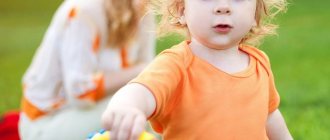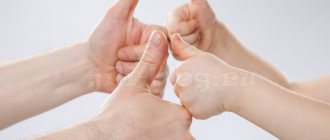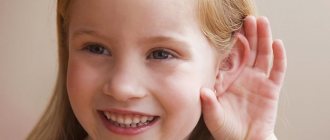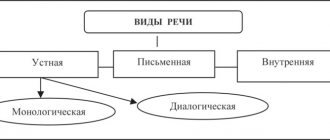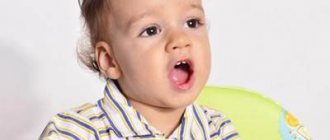The development of speech in a young child (1-3 years) is a very important stage in mastering their native language. The baby’s speech not only develops rapidly, it is formed. Therefore, helping a child develop speech during this period is especially important. Properly organized speech communication and speech classes not only stimulate the child’s speech development, but also help compensate for possible disorders, for example, a lag in speech development.
Age norms for speech development at 2-3 years
Each age has its own vocabulary, certain pronunciation skills, and the degree of understanding of other people’s speech. So, the baby babbles his first words at the age of about a year. At first they are indistinct, but over time they become more and more clear. By the age of 2-3 years, the basic speech base is already formed, therefore, from birth to 3 years, you need to pay special attention to the development of the baby’s speech.
Speech norms for children 2-3 years old :
- The vocabulary of a 2-year-old child is approximately 200-300 words, and after six months the number of words reaches 1000-1200. More than half are nouns, with verbs in second place. By the age of three, the active use of adjectives, pronouns, adverbs, prepositions and conjunctions begins.
- The child is able to construct simple sentences of 2-3 words, explain what he needs, and communicate with peers. These are mostly declarative or exclamatory sentences. Single words are used as questions: where, how, why.
- The child names the size of the object (large - small), color, taste (sweet - salty - sour), shape (circle - square), quality (bad - good).
- Generalizing words appear in speech. For example, an orange, an apple, a pear are fruits, shoes, slippers, boots are shoes.
- Lightweight words like “bi-bi” and “tu-tu” disappear from speech.
- The baby understands the adult’s address to him.
- Incorrect use of declensions, numbers and genders is possible. By the age of three, their use should correspond to the language norm.
- Children at this age love to invent their own words. Substitutions of letters are possible, syllables in long words are swapped or shortened. For example, a spatula is a shovel, Vaseline is majeline, etc.
- Two-year-old children have difficulty pronouncing hissing sounds, replacing them with whistling sounds. Hard sounds are often replaced by soft ones, and this is normal. Some children already pronounce most sounds by the age of three, even the most complex ones - l, r.
Communication with parents and loved ones is the main source of information for a child. He unconsciously copies those with whom he is close.
Advice At the age of 2-3 years, the child’s attentiveness increases, he begins to listen to the speech of others. Children are very sensitive to the norms of language, so it is important to speak to them correctly: pronounce sounds clearly, do not lisp, use understandable words, take your time, speak with expression.
Articulation gymnastics for stuttering
Stuttering is a speech problem that is sometimes difficult to treat. Success can only be achieved through daily training.
Articulatory gymnastics for stuttering is one of the best, because it is aimed at strengthening the muscles of the articulatory apparatus.
Examples of exercises:
- inflate your cheeks, release air, inflate each cheek in turn;
- clap your lips together (like a fish);
- press your tongue on one or the other cheek in turn;
- puff out your cheeks while closing your mouth, then hit your cheeks with your fists to release the air noisily;
- bite the upper and then the lower lip.
The age of early development (2-3 years) is a short, but truly unique period of life, when the child’s brain is programmed for intensive formation and learning. Parents should pay special attention to the child, because it is at this time that the foundation is laid for the development of the baby’s speech and thinking.
How to develop speech: games, exercises and communication
The speech development of 2-3 year old children largely depends on how much time parents devote to it.
A few rules to learn before starting classes:
- You need to start communicating with your child as early as possible, even when he is not yet born.
- During games and exercises, you need to look at the baby. Eye contact is a prerequisite for the emotional stability of the baby.
- The child should see how the muscles of mom or dad's face move when they talk to him. This way he will quickly match certain movements with sounds. During classes, it is useful to be in front of a mirror so that you can see all the movements of your face.
- The more repetitions, the better. At a younger age, you will have to repeat it ten or even twenty times so that the baby remembers better. This is normal, so parents need to be patient.
- The clearer, slower and louder the words are spoken, the faster and more accurately the baby will be able to repeat them.
- Any attempt to speak should be encouraged, even the most inept and unintelligible.
- And, of course, you can’t swear if something doesn’t work out. Over time, it will definitely work out, but the child may experience additional difficulties due to excessive emotionality of the parents.
- Classes should be carried out daily, but there is no need to overtire the baby. 10-20 minutes a day, divided into several short lessons, is enough.
- The more you read to your baby, the faster his vocabulary expands. Expressive reading will help you understand complex structures.
- The child's temperament must be taken into account. With high intellectual development, the baby may simply be silent.
Exercises for speech development:
- To expand your vocabulary, it is convenient to study words on general topics: fruits, clothes, animals, toys, etc. The parent clearly names the object and offers to repeat its name. It is useful to include definitions, for example, the ball is green, the cube is yellow. It would be good if additional words would emphasize the belonging of objects to gender or number. This way the child will quickly begin to catch the difference. Example: big doll - big ball, yellow pear - yellow cube.
- First, the parent names the object, and then this role is transferred to the child. You just need to point to an object and ask what it is. Any answer should be encouraged; if the child makes a mistake, then gently correct him.
- Give your child riddles. It's good if the answer rhymes. Examples of riddles: “Igo-go! - the child screams, that means it’s ... (foal).” Or: “Chick-chirp! Don't be timid! I’m an experienced... (sparrow).” Other riddles: “The monkey loves oranges and bananas very much.” “He purrs and sings. Did you guess it? It's a cat)".
- Read simple poems to your child and ask him to complete the phrase. After several readings, he will remember the last words.
- For the little ones: the mother pronounces the first part of the word, and the son or daughter finishes it. This is how words of 2-3 syllables are learned: shop, dog, car, road, etc.
- Let the child determine the diminutive form of the object. For example, an adult asks the question: “What is the name of the cat’s child?” The kid answers: “Kitten.” And so on: puppy, chicken, duckling, baby elephant.
- To develop imagination, it is useful to ask questions such as: why do we need water? spoon? cup? Let the baby dream up.
The most effective are those classes that are conducted in a playful way . The child feels relaxed and is interested in doing fun and active tasks. Games for developing speech for children aged 2-3 years:
- Imitation of sounds of animals, birds, objects. You need to invite the child to depict the simplest sounds: bees, cows, cats, dogs, rooster, steam locomotive, etc.
- Let the baby guess the sound. Play with him like this: portray some animal, and let him guess who or what such a voice belongs to.
- If there are toys in the form of animals in the house, make performances with them.
- A good exercise for the voice: arrange a competition to see who can hold on to the sounds “aaa”, “oooo” and others longer.
- Attention game: place objects on the table and let your child remember them. Then ask him to close his eyes and remove one object. Let him guess what is missing. Start with 2-3 items, gradually increasing their number. You can play the other way around: add a new item and ask the baby to find out what appeared on the table.
- Another game for attentiveness: ask your child to remember what you are wearing, leave the room, add one item (hat, scarf, glasses) and come back. The baby must understand what has changed.
Advice It will be interesting and useful for a child to exchange with parents. Let him take on the main role: ask a riddle, ask a question, hide an object, or change clothes.
Don't ignore the exercise of your tongue and lips . General gymnastics for the development of facial muscles will be useful:
- Pull out your lips with a tube.
- Stretch your mouth into a smile.
- Smile, showing your teeth.
- Let the child just make funny faces in front of the mirror.
Tip If your child cannot give the answer to a riddle, let him think for a while, and then clearly state the correct answer. In time he will remember it.
Development of active speech in a child under 3 years of age
Of course, all parents want their child to speak as quickly as possible, so that his speech is clear and correct. By developing a child’s active speech, we first of all stimulate his speech imitation.
Speech imitation is the reproduction after the speaker of the sounds, words, and phrases he pronounces. Speech imitation of a small child at first looks like an echo: an adult speaks and the child immediately repeats. Over time, the possibility of time-delayed repetition appears. For a child’s imitation of an adult’s speech to be meaningful, the speech must be closely related to the child’s practical activities. According to physiologists, imitation in humans is an unconditioned reflex, that is, an innate skill. The baby, without realizing it, adopts the speech that he hears from the lips of others.
If a child’s speech develops with a delay, it is necessary to carry out special work to activate the need to imitate the words of an adult. At the same time, the child’s attempts to speak are accepted in any form, even if he speaks incomprehensibly and distorted.
It is better to develop speech imitation in interesting games. For example, we run around the room with our arms spread out to the sides - we are “airplanes”, we fly and buzz “Oooh!”; or we walk around the room and “turn the steering wheel” - we are “cars”, we drive and signal “Beep!”; We pretend to play the pipe - “Doo-doo-doo!”; or we put the doll to sleep and sing her the song “Bay-bye!”
Particularly effective for speech development is the technique of finishing words in familiar nursery rhymes and poems. To do this, we pause, asking the child to finish the last word in a line of poetry or a whole line. For example:
Birdie... (birdie), Here's some... (water)! Here you have... (crumbs) On my... (palm)!
Cockerel, cockerel... (Golden comb) Look out the window... (I'll give you some peas!)
In addition, it is necessary to carry out special work on the development of the child’s verbal dictionary, taking into account the following pattern: the more words - names of actions in the child’s speech, the higher the level of development of his speech! When developing a child’s verbal vocabulary, first use lighter versions of words: “top-top” - goes, “kach-kach” - swings on a swing, “am-am” - eats, “kup-kup” - bathes, “boom” - fell and etc. To make it more interesting for the child to study, you can select photographs of the child himself and his family members, in which they perform some simple, recognizable actions.
Of course, it is better to work on the development of active speech using visual aids - objects, toys and pictures.
The benefits of finger games, drawing, modeling and other types of children's creativity
Pediatricians always recommend that parents massage their baby's hands, and when he grows up, play finger games with him. The fact is that hand exercises will stimulate those areas of the brain that are responsible for speech. The more flexible a baby’s hands are, the faster he begins to pronounce intelligible words, the faster he learns new ones, constructs sentences, and reacts to the speech of adults.
Games can begin with regular massage, rubbing, and tapping. At 2-3 years old you can play nursery rhymes with your child. The parent recites a poem, and at this time the child performs some actions with his hands. The most popular nursery rhyme games: “Ladushki”, “We shared an orange”.
Fine motor skills are significantly affected by activities such as drawing, modeling with plasticine, cutting out paper, etc. Give your child simple tasks: draw a ball, a sun, a cloud, a flower. Tell a fairy tale and draw its main character together. Contact with small objects also helps develop speech. Let the child pick up buttons, beads, pencils, and learn to tie his own shoelaces.
It is recommended to perform breathing exercises. It saturates the child’s body with oxygen and energizes it. Children who breathe correctly move more actively, think better, and therefore develop faster, including in speech. Breathing exercises are also performed in the form of a game. All children like to blow soap bubbles and balls. Place candles on the birthday cake: let the child try to blow them out, making a wish.
What do speech therapists advise?
Seven simple and wise tips from speech therapists will help adults correctly structure their communication with their child so that his speech develops quickly. Let's list each of them:
- Support and encourage the child's activity, openly express joy when the baby tries to pronounce sounds and syllables.
- Help your treasure, buy educational games. Puzzles, cut-out pictures, cubes with pictures, insert games will help develop fine motor skills.
- Come up with finger games for your little one. The fingertips are replete with nerve endings that influence the stimulation of the motor area of the brain. A simple game has long been invented in which each finger is given the name of a family member. Touch your baby's fingers and come up with different stories so that all the fingers are included in the plot.
- Be sure to read books with your child, tell him fairy tales, memorize poems, and sing songs. Take as your assistant the works of famous children's writers (Mikhalkov, Barto, Bianchi, Marshak, Chukovsky).
- Discuss everything you see with your child in detail. Where the car is going, why the bird is singing cheerfully outside the window, what dad’s job is, what the kids are playing in the yard - any event or action should be accompanied by detailed verbal explanations.
- Tell your child about domestic and wild animals, teach him the “language” of animals and birds. The cows say “moo-moo”, the sparrow chirps “chick-chirp”.
- Memorize with your child funny children's poems about “The Thief Magpie”, the clumsy bear, about Tanya and her ball. Call your grandmothers for help, they usually know a lot of these poems.
What toys, books and aids can be used for speech development
To help parents, there are special benefits that will accelerate the baby’s speech development. Most often these are cards with pictures. It is very useful to accompany classes with images of objects. Looking at the card, the child will first name what is shown on it. Then you can come up with a short story together about this animal or object.
Children are developed by blocks, puzzles, toys, construction sets, including Lego. You need to start with 3-4 parts, increasing their number with age. Toys are always included in educational games. The most convenient object is a ball. The favorite children's game - "Edible - inedible" is impossible without this item. Let your child catch the ball when you say something is edible, and return it when you say the opposite.
Other ball games:
- Mom throws the ball and names the letter. The child catches it, comes up with a word starting with the named letter, pronounces it and throws the ball to his mother.
- With older children, try playing antonyms. Mom throws the ball and says a word, and the child comes up with the opposite: day - night, light - shadow, fast - slow, black - white, etc.
Listening to sounds should be included in your classes. It’s good if you have the opportunity to take your child to the zoo.
Useful books for speech development:
- E. Yanushko “Speech development in children 1-3 years old.”
- S. Batyaeva, E. Savostyanova “Album on speech development for the little ones.”
- L. Smirnova “Speech development in children 2-3 years old.”
- A. Astakhov “My first book.”
- O. Zhukova “Baby’s first textbook.”
- All books with folk tales and pictures, alphabet.
Development of general imitation
General imitation is the copying of movements, actions, and facial expressions.
The child reproduces the movements he sees and successfully remembers them when repeated many times.
The mechanism of imitation works on a subconscious level in everyday life, and educators and speech therapists use it consciously when conducting classes with children.
It is important that the child is in the correct speech environment, i.e. it is better to limit communication with people who have speech defects. Watch your behavior - words should not contradict actions.
The development of general imitation begins with the repetition of elementary movements, then perform several actions simultaneously. The next stage is the implementation of a whole chain of actions that are logically connected and, as a rule, socially significant (for example, feeding a doll and putting it to bed).
When working with children, follow some rules: your sentences should be clear, simple and not too long; the speech of an adult is emotionally bright, calm, not loud.
General imitation games can be played with one child or with several (usually 3-5 children).
But! Keep in mind that when playing in a group, children imitate not only the adult, but also each other.
Games with general imitation
- Let's do exercises. The point of the game is to follow the adult’s commands (hands up, arms to the sides, jumping, clapping). To maintain interest and attention, invite the children to choose a leader from among themselves.
- Birds. Children play birds. An adult comments on every movement: “We fly like birds! Let's flap our wings up and down! Now the birds are pecking at the grains!” Gradually the pace of the game increases.
- Palms. A series of movements with the palms is performed:
“Palms up (put your palms on the table with the outer side down)!
Palms down (turn your palms over)!
And now put them on their sides (put our palms on their edges)!
And we clenched our fists (we clasp our palms into fists)!”
At first the movements are performed slowly, then faster and without the participation of an adult.
Difficulties with speech development: how to determine
All children are different: some build sentences by the age of three, while others use a small number of words. Any developmental norms are conditional; speech skills directly depend on the child’s temperament and his needs. Some children just need to name the object to get it, so they don't use complex constructions.
Sometimes you can independently determine that a child has a delay in speech development based on a number of signs. Some of them are obvious:
- Severely limited number of words used.
- It is difficult for a child to answer simple questions.
- It is difficult for him to repeat a sentence of 4-5 words after an adult.
- When pronouncing certain sounds, part of the face noticeably tenses.
- Frequent replacement of syllables and sounds in words.
- The baby does not understand the meaning of poems and fairy tales.
- He has difficulty with age-appropriate intellectual games. For example, it is not possible to assemble cubes or pictures with more than 4 parts.
- The child speaks too quickly.
- The child refuses to speak.
The reasons for developmental delays can be both physical characteristics and lack of attention from parents. In the second case, this is easy to fix. There are a lot of educational games, exercises, poems. In any case, the child needs to be shown to a speech therapist and neurologist to find out if there are structural defects in the speech apparatus or brain problems.
Creating a developmental environment
In order for a child’s speech to develop, it is necessary to create favorable conditions for this. The most important thing is to talk to the child as much as possible, because speech is based on imitation - repeating words and phrases after an adult. Speech should constantly surround the baby; he should “bathe” in speech. To do this, the adult comments on all everyday situations, routine moments and other events in the baby’s life.
For example, washing: “Let’s go wash. Let's open the tap. No, not this way, the other way. Like this. Where's the soap? Here's the soap. Take soap and wash your hands. Put the soap in the soap dish. Let me help you. Three hands good. Now let's wash off the soap. Place your hands under the water - like this. Now let's wash our face. Take water into your palms and rub your face. Close the tap. Now let's shake the water off our hands - like this. Where's the towel? Take a towel and dry your face and hands. Well done! Look how clean it has become.”
Perhaps such a constant conversation with the baby will initially cause some difficulties for adults and will require a change in communication style and behavior. But as experience shows, this is a matter of training: if there is a desire and enough persistence, then an adult can, over time, learn to communicate with the baby more constructively from the point of view of the child’s speech development. At the same time, with experience comes a “sense of balance”: you need to speak constantly, but at the same time not overdo it and not be too verbose, speak with normal volume, simple phrases and only to the point.
What to do if the child does not speak
When such a problem arises, many parents begin to sound the alarm. Before drawing conclusions, you need to show the child to a specialist - a speech therapist, and sometimes a neurologist. Possible problems that prevent you from speaking may include malocclusion, neurological pathologies, and hearing problems. The speech therapist must identify speech delay at an early stage; the sooner the correction begins, the more successful and easier it will be. You can show your child to a specialist as early as 2-3 years old. Speech development classes will not necessarily include diction training. They can be aimed at solving problems with hearing, attentiveness, and expanding vocabulary.
The development of speech skills up to 3 years is an important stage in the formation of a child’s personality. The sooner the baby can express his needs, the easier it will be for him to find a common language with his peers. Children with whom their parents were actively involved are more emotional, begin to show interest in surrounding objects early, and develop creatively. Even if the baby has no signs of developmental delays, home activities and games will be no less important.
The role of the book
The book introduces the child to the world around him; develops logical and imaginative thinking, memory, imagination; expands vocabulary; teaches you how to write sentences correctly.
Through reading, a child learns to listen and concentrate.
Family reading is a way of communication between parents and children, a good method of education and a means of leisure.
Psychologists believe that children to whom their parents read books are more emotionally balanced and self-confident.
How to conduct classes at home correctly
Moms and dads can help children learn new words, master the correct grammatical structure of speech, and improve their sound culture. There are several important rules that must be followed during home speech therapy sessions.
Lessons should be held regularly, preferably every day, and certainly in a friendly, calm environment. It is worth presenting the next exercise in the form of a game, try to captivate the child with a developmental task. You can turn mandatory training into a contest or competition to see who can complete the task better, faster, and more carefully. Support your child, praise him not only for a good result, but also for his efforts. Avoid criticism and harsh remarks.
Articulation gymnastics must be carried out with a stable table mirror, so the child can see the result of his efforts. It is useful to use pictures of all the tongue exercises. Special aids for independent study with a child - necessary and obligatory help for parents
For example, a large speech therapy textbook with tasks and exercises for the little ones is a complete collection of necessary exercises, supplemented by detailed guidelines for implementation and illustrations. Use rhymes, tongue twisters, speech therapy songs for children for classes - such material helps to achieve results faster, develops not only the speech of preschoolers, but also their attention and memory. Try to speak clearly and correctly, using all the richness of the expressive means of language. Show your son or daughter an example of an attentive and caring attitude towards him
Talk on different topics, read poems by heart, play speech games.
At home, you can organize both individual and group speech therapy sessions for children 4-5 years old, both options give excellent results.
